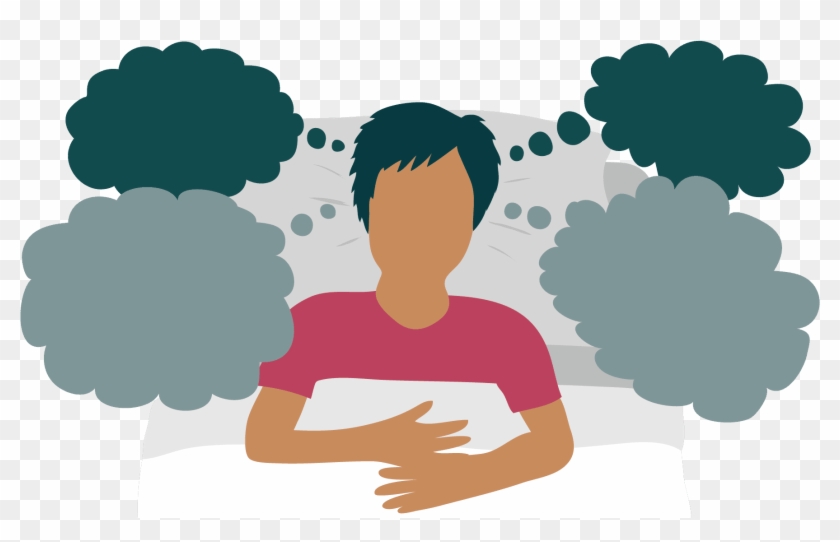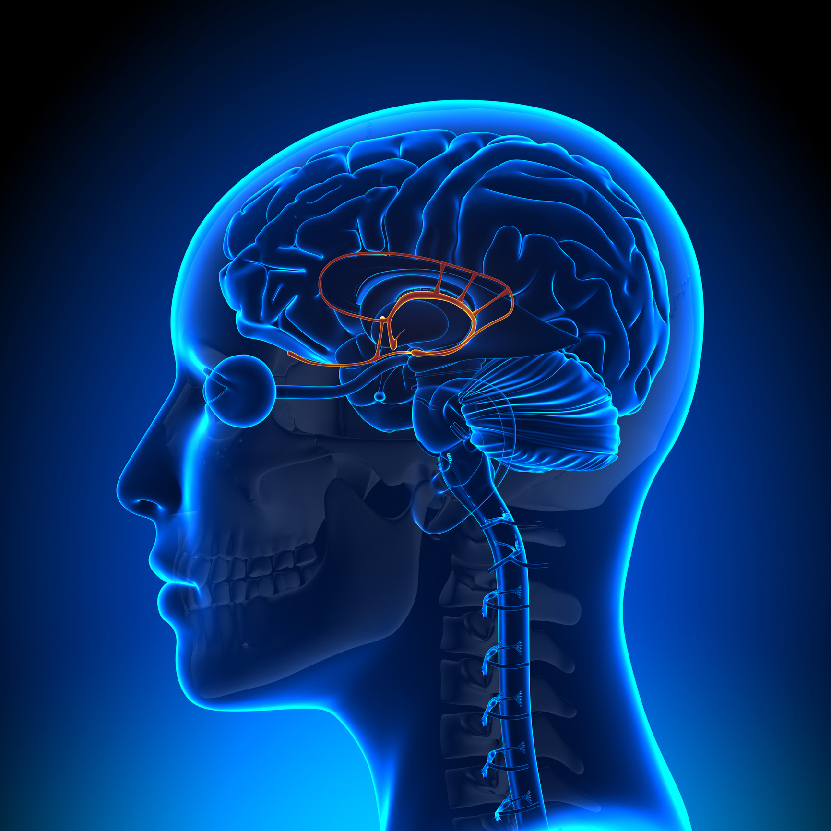Research Notes: Body Keeps the Score Part 5a

Section 5 of Body Keeps the Score, subtitled Paths to Recovery, is so long that it encompasses almost half the book. Because of this, I decided to divide this section into 3 parts (a,b,c) to make the digestion of the material easier for me.
Self Leadership
Trauma makes you feel like you aren't in control of yourself, or at least are not the one in charge.
The resolution to trauma involves learning how to feel your feelings without collapsing or becoming overwhelmed.
- There is no cure for a traumatic event - the focus is on dealing with those feelings so they do not harm your day to day life.
To do this, most people:
1. Find a way to be calm and stay focused
2. learn methods of staying calm and focused during flashback fragments
3. Feel engaged and fully alive in the present
4. Stop keeping secrets from yourself about how you have managed to stay alive so far
* These are NOT steps or goals, they overlap and some may find one more difficult than another.
How to approach trauma recovery
- Question used to be "What is the Story" but this is unnecessary
- This focus on story has more to do with a therapist wanting to understand what happened rather than helping the patient overcome their trauma.
- The full story does. not. matter.
- The patient may not remember it all, and the therapist does not need to know it all.
*The person experiencing Trauma does need to confront what has happened to them, but only after you feel safe and will not suffer from being re-traumatized by memory
***This is something I should consider when tackling the ending. I have stated from the beginning that the game is not intending to demonstrate how to heal trauma, but I need to carefully consider how this re-traumatization is presented as Sam relives and iterates on her trauma.
The rational brain and executive functioning is good at rationalizing things like trauma responses, but rationalizing the trauma does not get rid of the emotions and trauma responses you face during PTSD.
"Understanding why you feel a certain way does not change how you feel" p. 207

Limbic System Therapy
"As long as people are either hyper-aroused or shut down they cannot learn from experience" p. 207
You need to restore balance between Rational and Emotional Brain
- Traumatized people go into states of hyper arousal when they leave their "window of tolerance" leading to disorganization and reactivity.
To do this we need to work on Limbic System Therapy to restore the emotional brain to background noise.
The only way to access the emotional brain intentionally is to practice self awareness and allow ourselves "to feel what we are feeling" aka "interoception" p. 208
Dealing with Hyper-arousal
We can train our response to hyper arousal through physical actions such as breathing, chanting and moving.
- Doing so will stabilize heart rate and contain many effects of the hyper arousal state.
- "Learning how to breathe calmly and remaining in a state of relative physical relaxation, even while accessing painful and horrifying memories, is an essential tool for recovery.
This is something that should be taught to all emergency services personnel (fire, police etc.) and in high schools, yet the only people who do are those who work specifically with young children such as preschool teachers, as they deal with individuals who live in a state fixed in emotional brain.
Another good method is entering into physical practices which utilize these types of physical control, such as eastern martial arts - Aikido, judo, tae kwon do, endo, etc. These treatments have been very successful.
***Perhaps this is why I made such an effort to maintain my Stage Combat classes during college? It combined both theater and Kung-Fu techniques that lead to greater control over my entire body? I never did feel more in control than when I was actively practicing Unarmed, Knife Fighting, Broadsword or Rapier & Dagger.
Mindfulness
The core of recovery is self awareness - p. 210
Traumatized people are often afraid of feeling
- feelings and physical sensation are the enemy that must be overcome
Healing involves focus - on the ephemeral, liminal sensations of the present in contrast with the constant experience of traumatic feeling.
- To access trauma safely, you have to learn how to tolerate sensations that may remind you of past trauma.
This is the basis for MBSR (Mindfulness-Based Stress Reduction)

Relationships
To work through trauma you need to surround yourself with a secure network of people who will allow you to feel safe at a visceral level.
"survivors require the presence of familiar people, faces and voices; physical contact; food; shelter and a safe place; and time to sleep" - p.212
Traumatized people recover in the context of relationships - Children during the blitz fared better with trauma when they stayed in the city with their parents than children who were sent off to the country side during the bombings.
Re-connection with other people is integral.
Managing trauma alone gives rise to other issues: Dissociation, despair, addiction, chronic panic
- Relationships are filled with alienation, disconnection, explosion and implosion
Shame plays a big role in how these relationships fall apart: closeness can make a traumatized person afraid of being hurt, betrayed and abandoned. The shame tells the trauma victim that they are unworthy of love and connection, and that they will be found out as a rotten individual if others get too close.
You need to recognize that post trauma reactions began as a way to save your life but evolve in these out of context scenarios to become confusing and harmful to your physiological state, relationships and daily life. You have to learn how to bring these issues into focus so you can safetly look at these feelings and process them.
Therapists
Therapists should:
- Stabilize the trauma survivor
- Lay traumatic memories and reenactments to rest
- Reconnect trauma survivors with their fellow men and women
*Therapists themselves should also have been treated the way they are treating others.
Therapists should have their own therapists to make sure they are able to handle the things they are told by others.
& Open to exploring new options with the patient, other than what they are already aware of
Patients only improve if they have deep positive feelings towards their therapist.
- For some people, animals may be a safer option to connect to at first if they are unable to find connection with another person.

Communal Rhythm
Relationships = embodied communication and interaction through gesture, touch, and visual examination
Therapists who only focus on words without regard to physicality are missing half the picture
The physicality can be related to communal healing:
- In non-western medicine, some places, such as an area in Africa, had a group of traumatized women begin to hum in a group session. They started out looking dead to the world, but then began humming and moving together to dance.
- The movement, chanting and vocalizations together brought many of those individuals back to life.
As an experiment following this, researchers started treating high impact cases with experimental movement therapy and after only a few weeks found results.
*Later on in chapter 5 van der Kolk will look at how theater, martial arts, and writing have helped trauma patients as a type of Sensormotor Therapy.
Generally, as a part of relationships, physical touch can help greatly with trauma treatments:
- Simple actions such as being held, rocked or touched have a massive effect on dealing with excessive arousal
For some patients who's trauma involves being touched this can be a tricky subject, and these patients must slowly find ways of having tactile relationships in order to heal.
- Step 1 is building a bond with the person touching you, whether it is an intimate partner, a friend or a massage therapist.
- Step 2 is setting boundaries very early on and respecting those boundaries
Action, Agency & Pendulation
People who take action during a traumatic event are able to use their trauma responses (hyper arousal) for the purpose it has been designed. Because they are doing something with this energy, they are at much lower risk of trauma because they have agency to do something with their excess energy.
When helpless or immobilized, people have no way to engage with the arousal in their body and the trauma becomes imprinted there
Body based therapy, such as sensorimotor psychotherapy focus on the sensations of the body and the actions that occur around them rather than looking at the "story"
Pendulation = the process of gently moving in and out of accessing internal sensations and traumatic memories p.220
To reach resolution of trauma, associations must be made between the unfinished physical actions and sensations that occurred during a traumatic event, and the patient must then find ways to complete this action
- Our good buddy Pierre Janet even talked about something similar to this called "the pleasure of completed action" p.220
- For example, victims of domestic or sexual abuse find pleasure in the act of running away or defending themselves in safe versions of these events, through self defense classes and simulated attack
- These types of classes place people in a constant "zero hour" where they are being attacked so that they are able to automatically defend themselves in similar situations thanks to repetition
Methods of Integrating Traumatic Memory
Telling the story is important because "Without stories, memories become frozen" p. 221
Being able to tell the story and make sense of the events that happened in the past, you cannot integrate the fragments of your trauma.
Cognitive Behavioral Therapy (CBT)
- Originally developed to help with Phobias (irrational fears) not trauma.
- Through exposure to their fear, the brain can be trained with repeated stimulus while seeing that the outcome of the exposure does not lead to a negative event.
- Exposure therapy can even be done through virtual reality
- CBT tries to deal with a patients tendency to try and avoid a certain stimulus.
- In PTSD this type of therapy can lead to a process called Flooding
- Flooding = anxiety producing triggers are shown to PTSD patients in a sustained way
- It can take over 100 minutes of flooding before decreases in anxiety are reported. It does not appear to help patients deal with guilt or other associated feelings with PTSD.
- only 1/3 of PTSD patients show some improvement, and few rarely recover completely.
- CBT is shown to work about as well as a supportive talk therapy environment.
- In some cases, it appears that the CBT is trying to treat the wrong thing:
- Combat vets tend to do well in high adrenaline environments like a war zone, but do very poorly in their day to day mundane lives at home.
Patients can only integrate and recover form trauma if they are not overwhelmed with talking about it.
Desensitization
Desensitization can help patients become less reactive to certain triggers
- But is this the goal?
- This can lead to blunting of emotions and sensitivity
- This process doesn't actually help patients process trauma.
Drugs and Accessing Trauma
- LSD and Holocaust survivors
- A professor tried to treat traumatized holocaust survivors with LSD to safely access these memories, but the results were not peer reviewed
Extacy and PTSD
- It is unclear how Extacy aka MDMA works but it, like Prozac and psychotropic agents, mess with hormones like oxytocin, vasopressin, cortisol and prolactin.
- It increases a person's awareness of self , decreases fear, defensiveness and numbing.
- Pilot studies have supported this notion: 83% of patients who received MDMA and therapy were considered completely cured compared to the 25% in the placebo group; and none of the patients had side effects.
The biggest worry with MDMA (extacy) is that it will be misused and misappropriated as a cure all for PTSD

Medication & Self Medication
People will often resort to self medication on alcohol and drugs in order to dull the sensations of PTSD.
The same is true of many of the drugs prescribed by psychopharmacologists.
However, drugs cannot cure trauma, only dampen the side effects of it
- They can help to control feelings and behaviors but always at a price - by blocking the nervous system responses to engagement, motivation, pain and pleasure.
Trauma patients tend to like tranquilizer drugs (benzos ie: klonopin, Xanax etc) because they work like alcohol, keeping them from worry and making them feel calm
- They also have a very high addiction potential and can interfere with the actual processing of trauma. Withdrawal symptoms can also heighten post traumatic symptoms.
Mood stabilizers, such as lithium, can take the edge off of hyper-arousal effects.
Meanwhile Antipsychotics block the dopamine system which lowers pleasure and motivation.
- Children on antipsychotics can have the added issues of being less adept at building up social skills and developing friendships at a critical age.
In spite of all of the research that suggests Prozac only really works for non-combat PTSD patients, the VA shells out billions of dollars on these types of drugs even though they lack any significant effect at ridding combat veterans of PTSD symptoms.

Language as Treatment
What good is it to talk about trauma?
- Traumatic events are almost impossible to put into words because of how they manifest
- Even collective trauma, such as 9/11 is described in trauma fragments as sounds, images, clips and emotions each year
- However, from these fragments, over time, we were able, as a nation, to create a narrative to share with others
"The path out of trauma is paved with words" p.234
Silence
Silence about trauma reinforces the trauma
- Silence reinforces the sense of isolation victims feel through traumatic experiences.
To process trauma, you need to "name what has happened to you" p.234.
- Naming it gives the survivor control.
- Being able to articulate complex feelings, and having others validate those experiences creates catharsis and epiphany.
- Otherwise, the experience of trauma would be boiled down to the concept of fear itself.
The most critical issue is allowing yourself to know what you know.
By sharing trauma, you are able to get perspective from other people, and it can reestablish connection with other people, and give you another vantage point from which to look at your trauma.
Finding these words, however, can be an agonizing process.
Dual System of Awareness
Talk therapy shows the limits of language:
- You can either tell stories or feel feelings deeply - not do both easily.
You get to choose: Logical Narrative OR feeling the emotions
We possess 2 forms of Self Awareness:
1. The Autobiographical Self
- Keeps track of self across time
- creates connections and assembles our experiences into a coherent story
- Rooted in language
2. Moment to Moment Self Awareness
- Keeps track of self at the present moment
- based in physical sensations
However, if we are in a safe space and are not in a rush we can find words to communicate this experience as well.
The first system creates a story for public consumption that, if we tell it often enough we start believing
the other registers how we experience the situation embodied.
Using language, some patients, such as one who was left to fend for herself after developing epilepsy, told the story of how weak she was when she was left alone, and how she should have stepped up to care for herself. After being guided through how her trauma responses probably helped her stay alive, she acknowledged that she did not deserve that treatment by her caregiver, and she was able to align her public story and internal experience.
Trauma stories create a bridge: the stories lesson the isolation of trauma and give explanation for suffering, and often times a target to blame.
Stories arent the be all end all however: They can ignore the fact that trauma radically changes people.

Writing and Trauma
One of the most effective ways of accessing your inner feelings is through writing.
- Particularly the use of free writing and associative, poetic style writing.
Free writing = practice of observing anything at all and writing down anything and everything you notice or associate with it. This can help, like a Rorschach test or tarot card, to see what things are preoccupying you and see what your inner focus is.
- The manifestations of these associations will be uniquely yours.
In experiments, trauma patients who wrote about both the facts of their trauma and about the emotions surrounding their experiences benefited the most in health, both physical and mental.
Similarly, patients told to talk about their trauma experiences to a tape recorder had recorded drops in blood pressure that was still measurable six weeks after being taped.
Interesting side effect: Those who have traumatic experiences can have very different writing styles when writing emotionally vs writing analytically. This manifests as childlike writing or writing in cursive or other varieties, depending on the type of writing they are doing.
- Such changes are called "switching" p.243
Art, Dance and Music
- Limited research into how art, dance and writing address trauma as therapy because the logistics of such a study would be extremely difficult.
- However, some research has indicated that you need to do more than just move, paint, or sing about a traumatic experience, you also need to be able to translate these experiences into language.
Language and Limits
The problem with language is that it can overwhelm listeners as well as speakers.
- People will stop talking about their trauma because no one wants to listen to it, as it can be difficult, disgusting and generally hard to hear.
"we have made unspeakable mean indescribable: it really means nasty" p.246
Talking about painful events does not necessarily establish community and it can in fact spark rejection - from family, friends, society.
- Step one is that you need to find a community that will be responsive to your truth.
Patients can become mute in therapy settings when they become overwhelmed with their stories.
- To help such muteness, it is essential to establish "islands of safety" which can help a patient ground themselves
- examples include areas that lie outside the vagus nerve: feeling hands, focusing on breath, acupuncture points etc
* "This sets the stage for trauma resolution: pendulating between states of exploration and safety" p.247
Sense of Self
Reason and understanding are not enough to regulate and interpret all of our inputs and we can feel on edge, unfocused and overall doomed. dissociation shuts down brain function.
Trauma makes you feel out of touch with your body, and so to get back in touch with your sense of self, you must be able to organize memories into a coherent whole.

EMDR
Trauma can only process if the rational brain is kept online while traumatic moments are replayed.
This can be done with EMDR (Eye Movement Desensitization and Reprocessing)
EMDR takes events and turns them from a feeling of something happening in the moment to an event that, while unpleasant or horrific, happened to them a long time ago.
EMDR has shown to be more effective as an antidepressant than even Prozac when administered to PTSD patients who also had comorbidity such as depression.
At its base, EMDR is a way to keep the rational brain online while the brain processes the trauma through a REM cycle -like state of being.
- You become able to view the traumatic event through the eyes of your older self, and reorganize those memories into a complete event where you have witnessed all portions of the event as completed actions
*You are able, through EMDR, to revisit traumatic experiences without becoming retraumatized by it.
The Story of a patient's trauma becomes besides the point.
- The Therapist does not NEED to understand the story - that is a voyeuristic tendency that can be edged out completely from the trauma session. It becomes about the patients internal process of healing.
3 Issues that preoccupy the author, Bessel van der Kolk:
1. EMDR loosens something in the brain that gives patients "rapid access" to traumatic memories that are loosely associated giving context and perspective
2. People can heal from trauma without talking about it.
3. EMDR can help patients even without a trusting relationship.
People report that after EMDR their stories no longer feel like fragments but a complete whole story in the past.
Studies are showing that EMDR seemingly cures acute PTSD after people integrate their traumatic memories without the same relapse that patients have who go off of their Prozac.
EMDR integrates traumatic material with life experience.
- Traumatic memories, unlike phobias, are a "reorganization of the central nervous system based on having experienced an actual threat of annihilation." p. 258
simply exposing people to their old trauma does not integrate the memory by itself.
EMDR works in these memories to restore a sense of agency, engagement and ownership of the body and mind.
EMDR in action:
1. Sit in a chair 4 feet apart
2. Bring a painful memory to mind and encourage the patient to recall the senses - heard thought, saw etc.
3. Once in the memory, you rate how real it feels on a scale of 1 - 10
4. Ask the patient to follow your finger which moves back and forth about 25 times
5. when indicated, therapist tells patient to notice that
It appears that then the patient can say what they are seeing or stay silent
After a time, associative images start blurring into the memories - Associated activities that start to give new agency.
These images do not have to have occurred, but like the child who draws a trampoline at the base of the world trade center, these new associative images integrate with the traumatic memories.
- This system allows the patients imagination to help integrate the traumatic memories, in an almost dreamlike state, and allow for memory processing and a sense of control.
EMDR and its relation to Sleep and the REM cycle
- There is evidence to suggest that EMDR is related to the REM (rapid eye movement) cycle of sleep.
PTSD, drugs and alcohol tend to disrupt sleep patterns and therefore the REM cycle.
Because it is theorized that dreaming, particularly in a REM cycle help us integrate our daily lives in memory, and because those with PTSD can be triggered by nightmares, that our brains never fully process traumatic memories as they should be.

Comments
Post a Comment